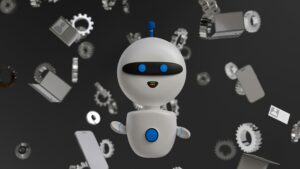AI and Automation in Business: What Every Professional Needs to Know


Artificial intelligence and automation have moved far beyond experimental stages to become key drivers of modern business operations. From automating customer support chatbots to streamlining inventory management, these technologies are reshaping how organizations operate. What was once a futuristic concept is now a central part of daily workflows across industries.
For professionals, the expansion of AI means work environments are rapidly evolving. Employees are expected to understand these systems and leverage them effectively. This requires a shift in mindset—seeing AI not as a replacement, but as a valuable tool that can amplify productivity and improve decision-making.
How AI Is Changing Professional Skillsets
As automation takes over repetitive tasks, the skill requirements for business professionals are changing. Technical fluency with digital tools, AI platforms, and data analytics is becoming as crucial as traditional expertise. Those who can quickly adapt to new technologies will have a significant career advantage.
At the same time, skills that machines cannot replicate—such as creativity, empathy, and leadership—remain essential. Professionals who can blend technical know-how with human insight will stand out in an increasingly competitive job market. This balance of hard and soft skills shapes the future of successful careers.
Redefining Traditional Roles
Business roles that once focused on administrative or manual functions are now being redefined. For example, financial analysts now use AI-driven platforms that automatically process data, freeing time for strategic forecasting and deeper analysis. Human resources professionals also rely on automated tools to screen applicants, allowing them to focus on cultural fit and employee development.
This redefinition of roles doesn’t mean jobs are disappearing. Instead, they are becoming more dynamic and impactful. Professionals are shifting from task execution to decision-making, strategy, and innovation, making their work more fulfilling and valuable to organizations.
The Human–AI Partnership
The future of work is less about humans competing with machines and more about creating a partnership between the two. AI systems excel at pattern recognition, large-scale data processing, and predictive modeling tasks. Humans, on the other hand, bring context, judgment, and emotional intelligence. Together, these strengths create a powerful synergy.
Practical examples of this partnership can be seen in industries like healthcare, where AI assists in diagnosing illnesses, but doctors provide compassionate care and ethical decision-making. In business, customer service teams use AI chatbots to handle routine questions while professionals step in for more complex, personalized interactions. This collaboration enhances both efficiency and experience.
Leadership in the Age of Automation
Leadership plays a pivotal role in guiding organizations through AI adoption. Business leaders must ensure that employees understand the benefits of these tools while addressing concerns about job security. Transparent communication and investment in employee training are essential for building trust during this transition.
Leaders must also foster a culture of adaptability and continuous improvement. Encouraging employees to learn, experiment, and grow in their roles ensures that businesses remain agile. In this new age, effective leadership is less about control and more about empowering people to thrive alongside technology.
Preparing for the Future of Work
Professionals and organizations must proactively prepare for the future shaped by AI and automation. For companies, this means investing in training programs that enhance technical and interpersonal skills. A well-prepared workforce can confidently navigate the integration of AI into everyday business functions.
Lifelong learning is critical for individuals. Staying updated on technological advancements, building new skills, and remaining adaptable will ensure continued career relevance. By embracing change rather than resisting it, professionals can position themselves for long-term success in a rapidly evolving marketplace.
Thriving in a Tech-Driven Era
AI and automation are no longer optional—they are integral to businesses’ growth and competitiveness. While these technologies transform work, they also create opportunities for professionals to focus on higher-value tasks and contribute meaningfully.
The key to thriving in this tech-driven era is understanding the strengths of both humans and machines. By building skills, embracing innovation, and working collaboratively with technology, professionals can shape a future where business careers are more dynamic, impactful, and fulfilling than ever before.
